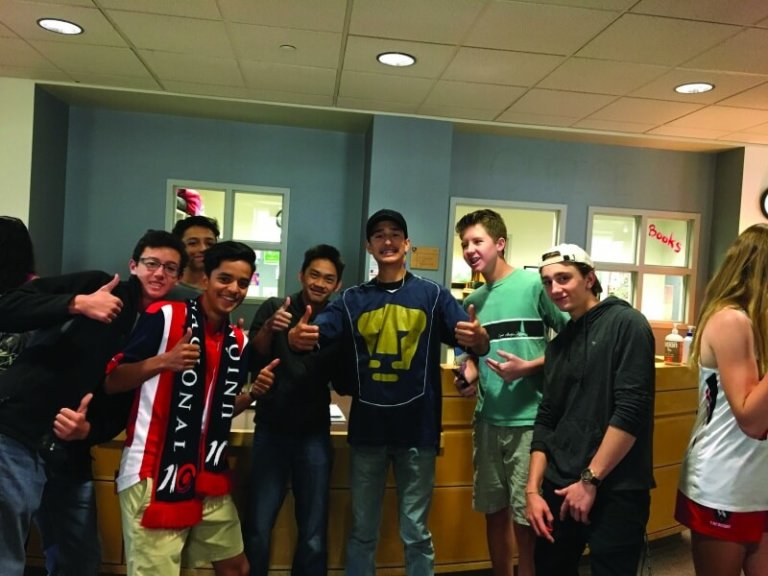Creighton Williams Abrams was a U.S. Army General who served in Vietnam, Korea and World War II. Hailed even by Gen. George Patton, Abrams was known as an aggressive and successful armor commander. The Army even named a battle tank after him.
It is no surprise then, that Abrams is the author the oft-quoted statement, “When eating an elephant, take one bite at a time.”
And it is no surprise that today’s most innovative thinkers tackle dauntingly complex and complicated problems such as education reform with the same strategies as a battlefield commander. When it comes to education, one of the most innovative war strategy rooms is at IDEO, an international design and consulting firm that is currently partnering with education change makers to design the most innovative systems, tools and experiences that will improve education.
Earlier this year, Colorado Academy was one of 14 forward-thinking schools that was invited to IDEO to experiment with ways to re-engineer the private education business model, and to use the same creative approach to tackle a programmatic need in their respective schools. CA tackled the question, “How can we make our libraries a more central part of a student’s experience?” Libraries – in schools and in towns and cities around the world — are on the forefront of retooling for the digital and mobile revolution, and they are transforming into very different spaces from the quiet book warehouses they once were.
CA Director of Libraries Allison Peters Jensen and Librarian Allie Bronston, along with CA’s Chief Financial Officer Alanna Brown and Head of School Dr. Mike Davis spent time at IDEO this past year thinking about ways to transform the CA library experience. The idea is to help CA’s libraries be more integral to students’ discovery of and access to information. To answer the question, CA leaders were encouraged to apply some of the most successful and disruptive business models that are at the heart of some of today’s most innovative businesses, including Netflix, Airbnb, Amazon, Google, and Apple. CA’s librarians have been:
- Thinking about how libraries can be community centers in which we leverage more high-tech ways of connecting students to one another and to subject matter expertise
- Thinking about how to develop signature student programs
- Anticipating working more directly with faculty to give students more consistent instruction in developing research skills
Back to the elephant analogy. The first “bite” was to increase the number of students and teachers coming into the library. Key measures of that are both library visitors and circulation statistics. So, CA started with a known driver of foot traffic in the CA Upper School: a good cup of jitter juice.
For one week, librarians brought in a cappuccino coffee cart for three hours each morning; students and teachers could charge coffee to school accounts or pay in cash. Said the librarians, “We are encouraging students to spend a little time in the library enjoying coffee drinks, playing games, and sharing answers to the question, ‘What can our library become?’ We want to learn from students what they would like to see in their school library.” A bit gimmicky? Sure it is, but consider the results.
Foot traffic was at least doubled and, on some days, tripled with the presence of the coffee cart; the busiest day saw approximately 275 visitors. And it wasn’t just for the coffee. Library circulation increased every day, doubled most days, and even quadrupled on one day of the week.
Librarians are working on similar ideas for Lower and Middle School students. In the meantime, students provided a wealth of feedback during the experiment. Wrote one of the librarians, “This was the first step of many, and we foresee more similar experiments in the future. We enjoyed reading all of your feedback from last week, and we will work on how we can incorporate your ideas into the library as our reimagining of the library unfolds.” Said another, “Essentially, this experiment is intended to improve the experience of going to the library. More than ever, we need libraries to be spaces where connection, truth-seeking, curiosity, playfulness, and joy are protected and nurtured. That’s where we’re headed.”
